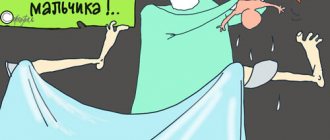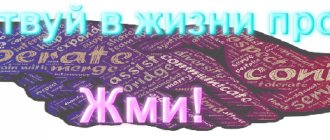Graphological workshop. What does handwriting say about the applicant?
Large companies and recruitment agencies are increasingly using the services of graphologists or adopting their methods. This is how HRs try to determine the reliability, loyalty and intellectual potential of future employees.
Graphology (psychodiagnostics of personality based on handwriting analysis) has established itself mainly in the USA, Great Britain and Israel, where it is used very widely.
The method, based on knowledge of psychology and psychiatry, uses Freudian terminology, referring to the unconscious. According to graphologists, when recruiting, graphology works more efficiently than interviews and questionnaire tests.
Irina Bukhareva, a handwriting expert, business consultant and head of the Representative Office of the Inessa Goldberg Institute of Graph Analysis in Moscow , argues that HR, as a rule, attaches importance to the “outer shell” of the applicant, while handwriting says much more about a person.
For example, the left slant of the letters can mean a defensive-justifying position; rounded letters - a tendency to narcissism; printed or semi-printed letters - about low intelligence, low mobility and the habit of living here and now; illegible handwriting indicates a person’s low socialization and indifference to whether others understand him.
“It happens that a serious candidate comes, dressed to the nines, but his handwriting turns out to be a narcissist, for whom it is important not to get the job done, but to make an impression,” says Irina.
According to her, the employer is focused on the candidate’s professional qualities and does not pay any attention to personal ones - whereas professionalism can be taught, but personality can be changed...
Naturally, in graphological analysis there are often examples that fall outside the classifications.
Sometimes the applicant tries to appear better and tries to write unnaturally beautifully - then a graphologist analyzing handwriting may suspect whether the person suffers from a mental illness.
Signature style may not match handwriting. This indicates that the person is “wearing a mask.” Graphologists say: in this case, you need to trust your handwriting.
Many of us use two or more handwritings - for example, when we need to quickly write something down in a notebook or write an official paper. In this case, you need to analyze the handwriting that is more convenient for a person to use. If both handwritings are equally comfortable, both should be considered.
It happens that a literate text is written in infantile handwriting, and an illiterate text is written in the handwriting of an intellectual. Literacy, graphologists say, is not an indicator of intelligence, but simply a skill, innate or acquired. Like, for example, the ability to drive a car.
Let's give a few examples.
Not a strategist
The person who wrote this text is not suitable for the position of manager. Such a candidate lacks speed of thinking, flexibility, and activity. The absence of an “internal motor” is evidenced by “heavy” handwriting, with right angles.
But the work of a performer is just right for such a candidate. The approval of his superiors will be important to him. The applicant who wrote this text is trying so hard to impress you that he writes out every letter. At the same time, he is very pedantic - he will not go to bed until the dishes are washed.
Social type - working with people
Handwriting characteristic of a woman. In this case - for a completely purposeful employee (right tilt - the handwriting moves). Her thinking cannot be called strategic - it will not be enough for a high leadership position. However, such an applicant could well become a department head or project manager.
Such handwriting also indicates a penchant for communication - a person will clearly work well with people. It is likely that work in the humanitarian field would be more suitable for him.
Thinking type – working with information
The handwriting of a person who is likely to be engaged in or inclined towards the intellectual sphere. This is evidenced by the pronounced upper zone (pay attention to the letters “b” and “d” in the first line), in comparison with the middle (“vertical spread”).
Such a candidate thinks analytically, is internally organized and is able to make long-term plans. Clearly structured text indicates the ability to process information. The position of manager is most likely suitable for him.
Intuitive type - creativity
A chaotically organized, “leaky” text speaks of a clearly expressed intuitive beginning - graphologists would call the author a person of a creative profession (this text was written by a radio presenter). Handwriting is impulsive; letter forms are rarely repeated - even the author himself will not write a letter the same way twice.
The implicit structure resembles a “stream of consciousness” - such an applicant relies on intuition and imagination. He may lack concentration and self-discipline - take this into account if the work requires perseverance.
Sensory type – applied activity
“Heavy”, angular handwriting with strong pressure and a complete absence of ornament is an example of “pure sensory”. A developed “center” speaks of tactical thinking with completely undeveloped intuition. From the point of view of graphology, the person who wrote this text is not distinguished by intelligence and speed of thinking. Evidence of “inhibition” is right angles. To write them out, a person makes micro-stops and breaks the trajectory of movement.
The best thing for such a person is applied activity, working with his hands. Such a candidate believes only what he sees. He will be good in a profession where specifics are important - “from now to now.” According to Irina Bukhareva, such handwriting, oddly enough, is most typical for... IT workers.
Other qualities of such a candidate include conservatism and loyalty to hierarchy. Which, however, is regarded by many employers as a “plus”.
Leader
Which of the two handwritings do you think indicates potential leadership?
Absolutely right - the second one. The person who wrote the first text has neither intelligence nor leadership abilities. Children's letters speak about this.
In the second example, healthy self-esteem is clearly visible. Confident pressure, original letter shape, distinct vertical spread, relative consistency of elements, with slight variability. All this indicates that we have before us a mature, self-confident person, potentially capable of making decisions.
Of course, you should not compare the applicant’s handwriting with these examples and make a decision only on the basis of a written piece of paper. Moreover, graphologists, like doctors, are against “self-medication” (which is natural - who wants to give their bread). But you yourself have probably noticed how the handwriting of people you know well correlates with their personality. This means there is still a reason to listen to graphological analysis.
Any reprinting of portal materials in electronic or paper media is possible only with the designation of the original source - careerist.ru.
Post your resume Add a vacancy
How to determine a person's character by his handwriting?
The size of handwriting indicates a person's sociability. Thus, the owner of large handwriting easily finds a common language with different people and has many friends. Small handwriting indicates isolation and secrecy.
Angular letters are characteristic of selfish people, and rounded ones are characteristic of kind and sympathetic people. Strong pressure is a sign of willpower and perseverance. Pale letters are characteristic of a weak-willed person.
Calligraphic handwriting characterizes a person as obligatory, neat, but not independent. Correct handwriting indicates calmness and balance. Sweeping handwriting occurs in people who are active, inquisitive, and have a cheerful disposition. Illegible handwriting indicates energy, carelessness, and also nervousness.
Integrated handwriting, when all the letters in a word are interconnected, is a sign of good logical thinking. If the letters are not connected with each other, then this indicates developed intuition.
The margins left on the left when writing indicate a person’s attitude towards material values. Narrow margins indicate frugality, and wide ones indicate generosity. If the left edge widens downward, this emphasizes extravagance. And the tapering left edge reveals a stingy and greedy person.
An optimist's lines rise from beginning to end, while a pessimist's lines go down. Straight lines are typical for calm, reasonable people who realistically assess their capabilities. Uneven, wavy lines are a sign of cunning and, perhaps, a lack of conscience.
A person’s signature can tell a lot. From it you can even learn about those character traits that a person hides from others and himself.
A standard, uncomplicated signature indicates self-confidence and courage. A signature consisting of loops is found in cunning and observant people. A crossed out signature speaks of impulsiveness and energy, while an underlined signature speaks of enterprise. A timid and reserved person circles a signature or several of its letters.
A zigzag stroke indicates imbalance. A stroke in the form of a line is a sign of emotionality. And if there is no stroke, then this characterizes the person as smart and prudent.
A person's handwriting can change depending on the situation, mood and other factors. For example, when a person experiences strong emotions, he writes with more force than usual. If a person writes in a different handwriting every time, then this speaks of his sensitivity and creative abilities.
I wish that my article will help you better understand yourself and the people around you.
Tags: handwriting, character, communication, letter, letters, writing, psychology











